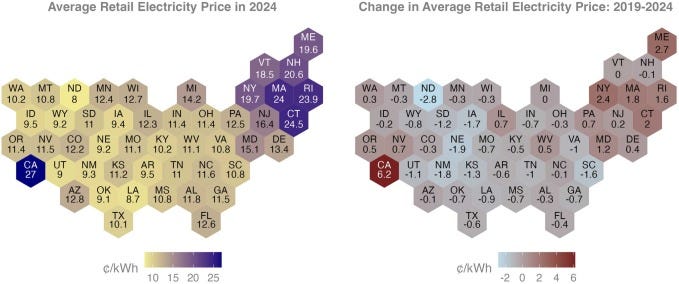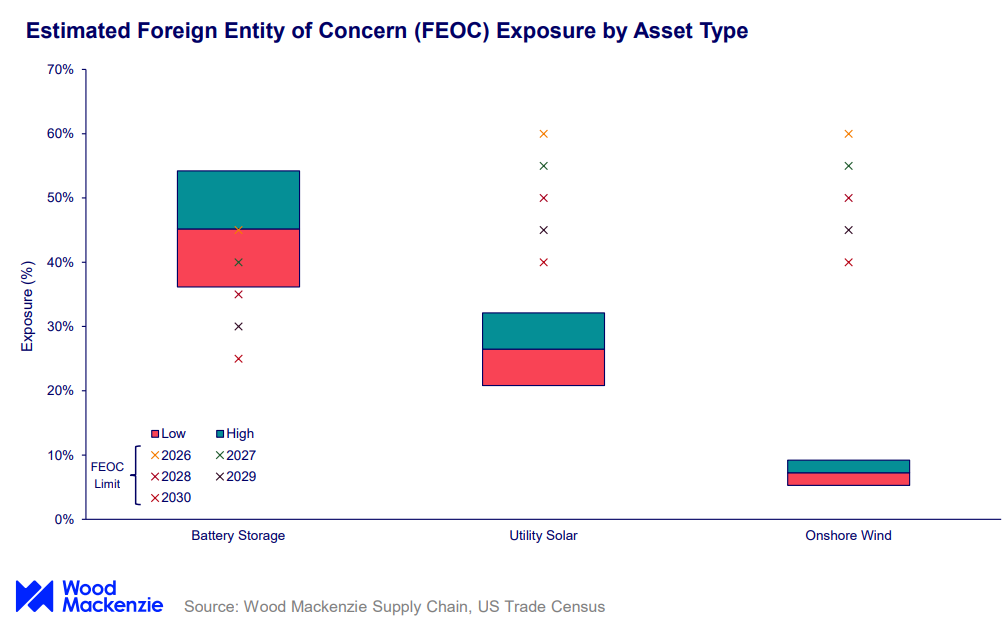Grid Hardening Meets Policy Whiplash - Reading & Podcast Picks - October 21, 2025
Data centers, heat, and end-of-life equipment are reshaping the map. Here is what changed this week and why it matters for families, projects, and the workforce.
A lot of noise out there. Here is the signal.
If you want to know where America is headed, watch the wires and the bills. Residential power prices rose 27% since 2019, even as commercial and industrial rates climbed far less. That gap is now front-page reality for families, and for anyone trying to site a project or staff a crew. Utility Dive
At the same time, demand keeps coming. Data centers, electrified factories, and heat in long summers are rewriting the load map in months, not years. The question is not whether we build, but whether we build smart and fast, with a workforce that knows how to deliver under pressure.
This week told a clear story. Money is moving to the grid. Rules are catching up to merchant transmission. Policymakers are testing demand flexibility as a pressure valve. Project costs are getting hit by policy, trade, and litigation. And the long bet on fusion got a playbook.
Below is what changed this week, why it matters, and where veterans plug in first.
Energy Department Closes Loan Guarantee to Strengthen U.S. Grid Reliability - The DOE
The Energy Department closed a $1.6 billion loan guarantee with American Electric Power to reconductor and rebuild lines across five states. In plain English, that means more capacity on existing corridors, fewer bottlenecks, and construction jobs where the work is. The department said it has “closed a loan guarantee to strengthen grid reliability and ensure lower electricity costs,” and that the project will “reconductor and rebuild around 5,000 miles of transmission lines,” creating “over 1,000 construction jobs.”
For veterans looking to step into high-skill, high-demand work, reconductoring is mission-critical. It upgrades what we already control. It also aligns with where investors are focusing: Reuters reports grid investments are “forecast to increase by 23% between 2025 and 2030.” As Avangard’s U.S. chief put it, “We need to meet this demand head on with foundational investments in both regional and local transmission.” Reuters
Rules of the road, finally - Utility Dive
Planning rules sound wonky until they touch your budget. On Thursday, FERC ordered the MISO grid to say clearly when and how merchant HVDC projects get counted in planning cases. That is a step toward avoiding duplicate builds and stranded costs.
“FERC gave MISO 90 days to specify when and how merchant HVDC transmission projects will be incorporated into its transmission planning processes.”
Commissioner Lindsay See pressed for rigor that any operator understands:
“Judiciously using sensitivity analyses to help ratepayers get the most value for their money may be one tool well worth its weight.”
Translation for project teams: better transparency on how big lines show up in models, fewer surprises in the queue, and clearer ground truth for financiers.
Your bill tells the story - Berkely Lab & Utility Drive
A new Berkeley Lab study shows households have been hit hardest.
“Residential electricity retail prices rose more rapidly than commercial and industrial prices from 2019 to 2024.”
“Nationwide, average residential prices jumped 27% to 16.5 cents/kWh in the five years since 2019 while average commercial prices increased 19% to 12.8 cents/kWh and industrial prices climbed 19% to 8.1 cents/kWh, the LBNL researchers said.”
Separately, the Bank of America released a report Friday that said the growing demand for electricity generation capacity and grid investments, partly due to data centers, appears to be pushing up electricity bills.
“Hurricanes, storms and wildfires can raise retail electricity prices through short-term recovery and rebuilding, and longer-term costs such as infrastructure hardening, operational expenditures and liability insurance bought by utilities”
For veteran families and small shops, the takeaway is practical: efficiency and time-of-use habits matter, and the faster we fix local congestion, the faster bills stop climbing. Abundance, an all of the above mindset, and flexibility in planning are key to navigate our way through.
A fast lever hiding in plain sight - The Guardian
Demand flexibility is not a buzzword (although it would be great if it was). It is a tool that pays people to shift power use off peak, easing strain and avoiding expensive builds.
“A cheap, bipartisan tool could help the US meet increasing energy demand.”
Jigar Shah’s line is the one to remember:
“It is one of the few tools that can be deployed at scale over the next few years to eliminate rate increases across the country.”
If you manage a facility or run a municipal utility, this is low-regret.
Facility manager: Enroll in a demand-response program, pre-cool before peak, shift pumps or compressors by an hour, add a few smart thermostats or a small battery. You get bill credits and lower demand charges. If it underperforms, you just stop doing it. No stranded asset.
Municipal utility: Launch peak-time rebates, thermostat programs, or a small VPP pilot with an aggregator. You shave the 10–20 tight days a year, cut expensive wholesale purchases, and delay a peaker upgrade. If participation is low, you’re out some admin cost, not millions in hard capex.
If you are a veteran stepping into energy operations, flexibility programs are where operations, software, and customer trust meet.
Policy fog over project costs - PV Tech
Developers are juggling tariffs, FEOC rules, and tax credit changes. Wood Mackenzie’s latest readout is blunt:
“The current tariff environment has raised storage project costs by 13.7%, utility-scale solar costs by 10.4% and wind costs by 8.5%.”
That delta cuts straight to financing. It changes what pencils out, where, and when. The professional move now is to pressure-test supply chains, lock in domestic content that truly qualifies, and build contingencies into EPC contracts.
This will be a test to separate the men from the boys, a place where vets fit nicely.
Cancellations, lawsuits, and the project map - Reuters
Back on October 2nd the DOE announced the “termination of 321 financial awards supporting 223 projects, resulting in a savings of approximately $7.56 billion dollars.” Whatever your politics, this is a giant line-item reshuffle mid-mission, and it leaves state and community partners re-planning everything from hydrogen to storage.
The legal fights began within days as states challenged the Solar for All cancellation and other cuts.
“These are projects that would have added energy to the grid and added flexibility,” Senator Martin Heinrich of New Mexico said. “The administration is constraining the energy that we can put on the grid, and at the end of the day, this is going to raise energy costs for consumers.” (Reuters)
Expect months of uncertainty in award land, which means real operators hedge with grid upgrades, PPAs with firming, and projects in states moving fastest on permitting.
The long bet got a map - DOE & Utility Drive
Fusion stayed above the fray. DOE released a national Fusion Science and Technology Roadmap that aims to align public research with private builds on an aggressive clock:
“A national strategy to accelerate the development and commercialization of fusion energy on the most rapid, responsible timeline in history.” - DOE
“DOE envisions that in the next two to three years, the public sector will “build small-to-medium test stands, start design of large-scale facilities” and pursue research and development regarding neutron sources.”
No one should plan tomorrow’s capacity on fusion. But every veteran leader should track it. The materials, tritium, and plant-engineering workstreams are where American industrial capacity and mission-driven R&D meet.
Final Thoughts
This week’s pattern is simple. Build the wires we need, plan like adults, take easy wins on flexibility, and keep options open as policy shifts push and pull project math. Veterans know how to operate in fog. We rely on clear priorities and disciplined execution.
I believe in an all-of-the-above America that keeps the lights on, trains the next crew, and pays its people well. That is a mission worth showing up for.
If this was useful, share it with a teammate who makes things work. And if you’re new here, subscribe so you don’t miss the next brief.




